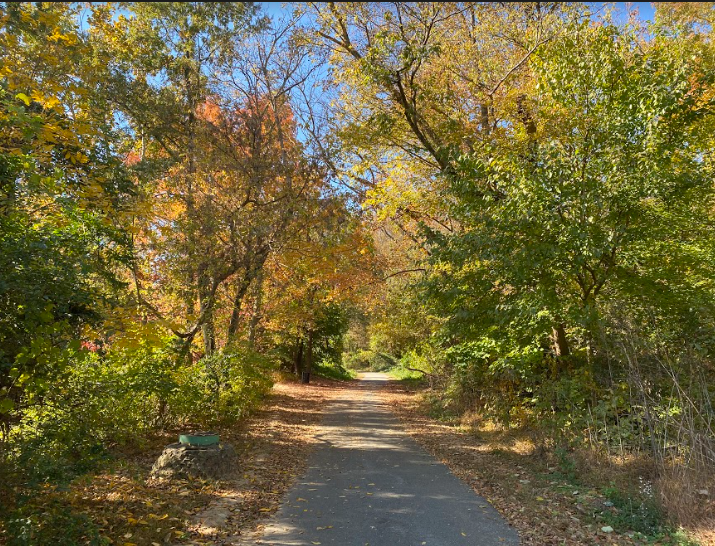Ask a Naturalist: Identifying Fall Trees

These native tree species all grow at the Gateway Nature Preserve, many of them along the Forest Discovery Trail above Salem Creek Greenway. In combination with a tree guide this list can to help identify trees by leaf shapes, bark, and fall color. Seek and iNaturalist are good apps to use; there are also many good tree identification books, just choose one that you find easy to use.
Trees in their list are organized by their scientific nomenclature, which groups similar species together (maples, oaks, etc.) Have fun!
Deciduous trees:
Boxelder (Acer negundo), yellow
Red maple (Acer rubra), orange to red
Silver maple (Acer saccharinium), yellow to red
Hornbeam (Carpinus caroliniana), yellow to scarlet
Shagbark hickory (Carya ovata), yellow-orange
Sugarberry (Celtis laevigata), yellow
Redbud (Cercis canadensis), yellow
Beech (Fagus grandifolia) , yellow changing to tan (beech leaves often stay on the tree all winter)
White Ash (Fraxinius americana), bronze purple
Walnut (Juglans nigra), yellowish green
Sweet gum (Liquidambar styraciflua), red to purple
Tulip poplar (Liriodendron tulipifera), yellow
Sourwood (Oxydendrum arboretum), scarlet red
Sycamore (Platanus occidentalis), yellow to orange to brown
Black cherry Prunus serotina), yellow
White Oak (Quercus alba), reddish brown
Scarlet oak (Quercus coccinea), red
Northern red oak (Quercus rubra), russet red
Sassafras (Sassafras albidum), yellow to red
Evergreens : Evergreens do lose their needles or leaves, but not all at once, like deciduous trees do. These evergreens all stay green over the winter:
Eastern red cedar (Juniperus virginiana) green
Virginia pine (Pinus Virginiana) green
Magnolia (Magnolia grandiflora) green
Non-native plants with leaves, most of them invasive, also stay green during the winter. All of these are present in the Gateway Nature Preserve, unfortunately!
Privets (Ligustrum spp.)
Japanese holly (Ilex crenata)
Nandina (Nandina domestica)
English Ivy (Hedera helix)